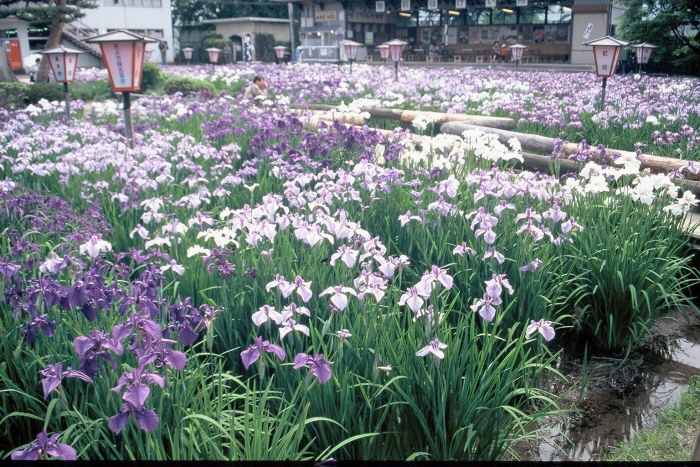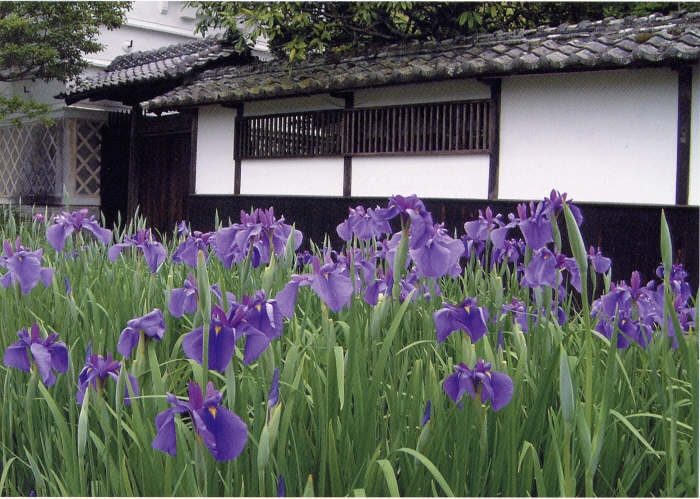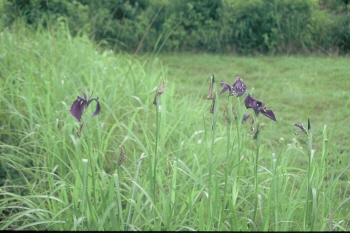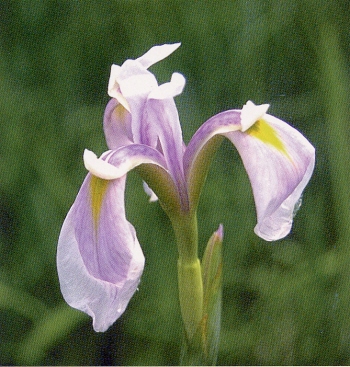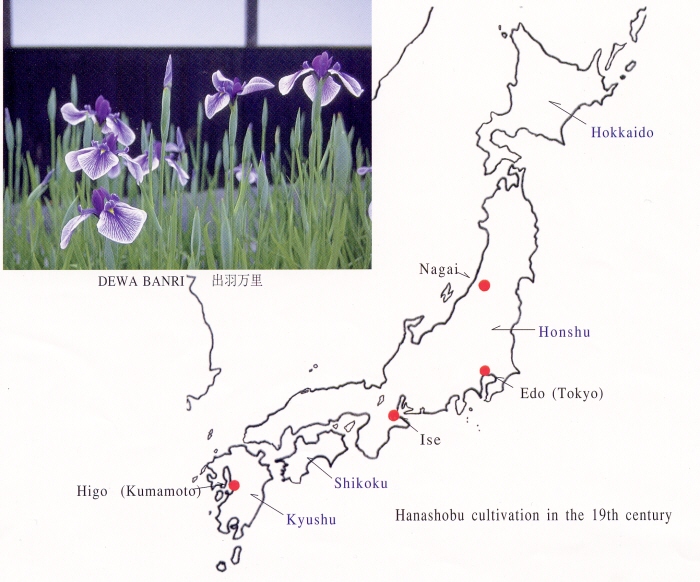|
The Nagai type of Japanese iris is older than the other three types, i.e. Edo, Ise, and Higo. Last year I visited the city
of Nagai in Yamagata Prefecture for the first time. My purpose was to
investigate the Nagai varieties. The Nagai district is a very important place
for Japanese iris lovers, especially for those who are interested in the origin
of garden cultivars. That is because the Nagai type is very old and cultivated
only in the Nagai district.
Mr.
Toshihiro Nagata, who grows Japanese irises for Kamo nursery, and I
visited Nagai city in June ,1997. Nagai
is located in northwestern Honshu. We went by train and at Nagai station by
Mr.Kakima, who is a key person for our planned investigation. Mr.Kakima is an
enthusiast of Nagai varieties and has tended them as a volunteer at Nagai Ayame Garden for a long time.
|
We
first went by car to Hagyu village on Nagai plain. It is a quiet farming village where there are
many rice paddy fields. Upon taking a short walk, we found many flowers of wild
Iris ensata growing along the dikes of rice field. These irises were not
cultivated forms that had been naturalized, but truly wild plants. This was
evident by their simple flower form with three narrow falls and almost no color
variation.
After
resting, we followed Mr.Kakima to a stream on a hill near the border of
the Ide-mountain range and the Nagai
plain. We found many flowers of the wild species in bloom in a meadow on the
hill. We felt fortunately to find two plants of the pink form of the species.
Mr.Nagata and I were excited at this finding but Mr.Kakima remained calm. He told us that there are many mutants forms
of the wild species in the meadows of the Ide mountains. I concluded that this
particular meadow and the dikes of the rice paddies must be secondary habitats
of the wild species. The meadows near the top of the mountains must be the
primary habitat of the wild irises. Perhaps using this area for agriculture
expanded the habitats. Nagai district has rich soil and a diversity of native
flora, bird, animals and insects. Here many natural variants of iris ensata
have survived. The people who live in northern Honshu, and especially in Nagai
district, protect nature. So wild species have great potential for developing
cultivars in the future.
|
|
We visited Nagai Ayame Garden next day. This
garden has cultivars of Ise, Higo, Edo, American and Nagai types of Japanese4
irises. We concentrated on the Nagai varieties. I made a number of observations
about these irises:
1.
About half of the cultivars had simple forms with narrow falls and standards,
but they showed a very wide range of color and pattern variations.
2. The
other half of the cultivars had color and patterns similar to old Edo
cultivars, but flower shapes and sizes were intermediate between the wild
species and the old Edo varieties.
3. Some of the Nagai cultivars had flowers
with a form different form any other type.
The
old records of this garden reveal that it was established in 1919, by
collecting Japanese iris plants from many private gardens in Nagai and Hagyu
villages. These varied widely in colors and patterns. Mr.Kakima explained that
Hagyu villagers had collected many mutant forms from the nearby mountains and
plains for their gardens. They enjoyed the blooms, and often drank sake while
viewing them. The bloom season coincided with the time when villagers took a
vacation from their agricultural work.
Hagyu
village was a castle town in the olden times, and very crowded. It had long
been the home of cultured people who enjoyed collecting, growing and
appreciating clones of Iris ensata. I believe that the following factors were
necessary for this "birth":
1. Gene pool:
Many mutants were brought into a limited area from the wild.
2. Open pollination by bees: The resultant seeds
increased the flower's variation.
3. Devotees:
Many people enjoyed the flowers, selected the most beautiful forms, and
possibly they exchanged the best flowers.
The iris breeding activity of Japanese
gardeners has always differed from that practiced in the West. European
gardeners obtain new cultivars by crossing different species, but Japanese
gardener pursues variation by gathering mutants from the countryside.
As an aside, I believe that the addition to
the gene pool of with forms was probably critical to development of a wide
variety of colors in cultivars of Iris ensata. The wide range of color and
patterns would not be possible without genes for the white color.
If
there were not a pool of recessive genes for white, other mutant color
variations would be masked with purple or violet, which are the dominant genes
in the species.
There is no sign of any species other than
Iris ensata having played a role in the development of the Japanese irises. All
cultivars and wild forms of Japanese iris have the same chromosome count
(2n=24). The only exceptions are aneuploid of Ise variety (2n=25), and these
cross readily with natural diploids. Therefore they are regarded botanically as
belonging to the same single species. The Nagai type is the oldest of all the
Japanese iris groups which survived today. Its existence gives us hints as to
how the modern cultivar was born, and provides material for future hybridizing.
|
